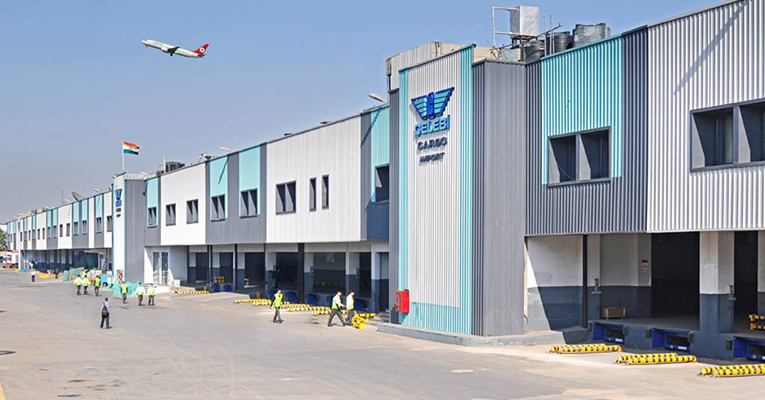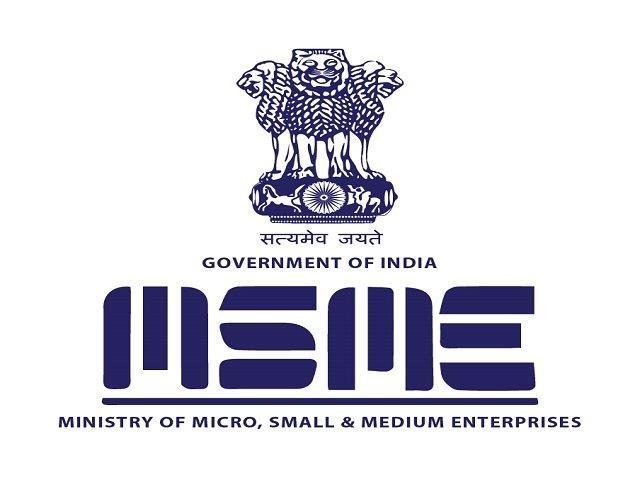
Celebi leverages technological advancements for growth
Technology is the saviour during pandemic and in post pandemic scenario and this goes for Çelebi Delhi Cargo too. IT has risen to the forefront as a critical enabler of business continuity and transformation, says Kamesh Peri, CEO, Çelebi Delhi Cargo. Moreover, Indian cargo and air freighters are beginning to stand on their own feet under the ‘Atma Nirbhar Bharat’ initiative of the Government of India, he feels. Çelebi Delhi Cargo has a proper strategy in place in terms of infrastructure and solution development to meet the future growth requirements. Kamesh Peri has shared elaborately in an exclusive interview with Apace Digital Cargo, highlighting expansion plans, competitive scenario, government initiatives, digitalisation of operations and lots more.
To begin with, how has been the post-pandemic for the industry and particularly for Celebi?
Post-pandemic, air cargo traffic is recovering faster than passenger traffic. According to credit rating agency CRISIL, passenger traffic demand in India for the fiscal year (FY) 2020-21 was 34% of pre-covid levels, while cargo demand was 74%.
At Celebi, while cargo saw a dip, it recovered probably the fastest in terms of beginning to show a return to normalcy because trade has to move, and the economy has to survive on exports and imports. The revenue from cargo has grown in the last year. Indian cargo and air freighters are beginning to stand on their own feet under the ‘Atma Nirbhar Bharat’ initiative of the Government of India.
During the challenging times, IT has been leveraged by Celebi in integrating various technologies into its workflow and infrastructure to strengthen & secure operations and increase employee productivity and efficiency. As a result of the pandemic, IT has risen to the forefront as a critical enabler of business continuity and transformation. Celebi will continue to push the boundaries of technology initiatives, with accelerated digitization as the norm and intelligent technologies such as Blockchain, AI, and IoT serving as the blueprint for long-term survival and leadership in this space.
What is the strategy of Celebi for efficient operations? How do you see the competitive scenario?
At Celebi, we’re focusing on infrastructure and solution development so that we can continue to provide our customers with as much reliable and flexible capacity as possible to meet current and future growth requirements.
Celebi has been investing in enhancing and upgrading our infrastructure to handle more than 700,000 tons/year of cargo. We’re also investing in upgrading Centres for Perishable Cargo with a capacity of more than 65,000 tons/year. Alongside a focus on a dedicated transhipment centre to seamlessly handle international volumes from neighbouring countries and connect them to their final destinations. Celebi has also introduced additional operating equipment to meet demand and regulatory protocols. And investing in security initiatives like dual-view x-ray screening machines, RA3 compliance, TSA compliance, zero theft & pilferage, extensive security manpower deployment, CCTV upgrade etc.
Going forward, we aim to enhance our Warehouse Management System to include new features, which improve processes, have value additions and enable digitisation. We shall be exploring technologies like IoT, AI, and blockchain in different areas like temperature monitoring, Data integration with Airport systems, routine tasks automation etc. Adopting tools for the digitisation of manual paper-based processes for improved efficiency would be actively pursued.
COMPETITION SCENARIO:
Indian Aviation is one of the fastest growing in the world and set to become 3rd Largest by 2024. The Ministry of Civil Aviation has a vision of achieving 10 million tons of air cargo by 2030 from the current number of 3.33 million tons. To achieve the overall target of 10 million tons, cargo capacities at metro airports would need to be enhanced and the Airport operators are mindful of the same. Industry players besides metro volumes need to also focus on transportation of cargo loads from Tier II & III. To facilitate this, the Govt. is planning to establish 33 new domestic cargo terminals by 2024-2025 which will allow the air cargo sector to flourish and grow.

The Ministry of Civil Aviation has robust plans for physical infrastructure for airports, which are essential for cargo handling. The Ministry plans to spend close to INR 98,000 crores over 4 years in terms of setting up new greenfield airports and expansion of existing brownfield airports.
With such a positive outlook it is but normal that existing and new players in the cargo & ground handling sector are going to up the ante, to be part of this growth story in India. In recent times there is a great level of interest shown by new players to participate in upcoming opportunities. To that extent the competitive scenario would be intense, but Celebi is strongly placed given the strength of its experience & expertise in the Indian and international markets.
What are the expansion plans and what would be the focussed areas?
According to IATA, world air cargo traffic is forecast to increase dynamically, with an annual growth rate of over 4% in the next 20 years. In that, air freight is projected to grow at a rate of 4.3% per annum. In India, there’s a huge opportunity for cargo to grow and move considering the ambitious targets that the Ministry of Civil Aviation has set as stated above. Indian carriers also recognise the potential of cargo and have even ordered quite a few freighter aircraft to dedicate a percentage of its domestic cargo, using such capacity. As a result, we’re focusing on infrastructure and solution development so that we can continue to provide our customers with as much reliable and flexible capacity as possible.
On the Cargo front, we are also looking at emerging opportunities in new airports. While most would be pursued on our own, in a few others we would work with partners.
What initiatives have been taken towards the digitalisation of operations? What are the further plans in this regard?
With the addition of customised and digitised systems, we are working towards technological refinement. It is a fact that the pandemic has accelerated the growth in terms of technological enhancements, however, we did not really wait for a pandemic to change things for us. The pandemic encouraged trends like supply chain digitisation, a revolutionary change in the entire working process of the Air Cargo industry.
On the IT front, as mentioned before, we aim to enhance our Warehouse Management System to include new features, which improve processes, have value additions and enable digitisation.
We plan to continue investing in the digitalisation of operations for improved productivity, users’ visibility of booking status and real-time status updates and powerful data analytics. We shall be exploring technologies like IoT, AI, and blockchain in different areas.
In general, our focus areas would be to develop innovative System solutions, have a robust IT infrastructure and maintain a high level of IT Security.
How do you see the role of government towards the industry considering Gati Shakti or several initiatives in place?
The government is working towards the growth of the industry and as mentioned in the 2022 budget, they plan to grow at 9.2 percent and focus on infrastructure development for the industry. It will directly impact the productivity of the cargo and logistics sector. Another significant positive is Gati Shakti Yojana and its element of data interface which will increase the adoption of technology across all modes and facilitate operations.
India’s logistics sector is witnessing a bullish trend, and the Government has always been helping with a host of measures. During the pandemic, with temporary arrangements, India had negotiated air transport bubbles with 37 countries including the US, Canada, UAE and the UK. The government is ensuring that capacity issues currently facing the air cargo industry are suitably addressed.
As stated before, the Ministry of Civil Aviation has a vision of achieving 10 million tons of air cargo by 2030 from the current number of 3.33 million tons, which roughly translates to a CAGR of 13.5%. It’s an ambitious target but achievable with the collective effort of all industry stakeholders!
To achieve the overall target of 10 million tons, cargo capacities at metro airports would need to be enhanced and the Airport operators are mindful of the same. Industry players besides metro volumes need to also focus on transportation of cargo loads from Tier II & III. To facilitate this, the Govt. is planning to establish 33 new domestic cargo terminals by 2024-2025 which will allow the air cargo sector to flourish and grow.
The Ministry of Civil Aviation has robust plans for physical infrastructure for airports, which are essential for cargo handling. The Ministry plans to spend close to INR 98,000 crores over 4 years in terms of setting up new greenfield airports and expansion of existing brownfield airports.
What challenges do you see in the overall operations in terms of ground handling for the cargo industry? Any expectations from the airline or agent?
Economic conditions, increased customer expectations, new products and altering laws are all reshaping how goods carried by air are handled, stored, and distributed, influencing cargo facilities. Some of the challenges faced by Indian air cargo industry are:
- Fierce competition from ocean freight since they offer more capacity while being less expensive.
- India lacks a larger dedicated freighter airline. In fact, during the pandemic, a few airlines began exploring opportunities in cargo operations by using passenger flights for cargo transportation.
- The most difficult challenge is resuming normal intercontinental travel, which brings back the belly capacity that is now unavailable on the market. However, we anticipate an increase in belly capacity during the second half of 2022.
As a result, changes must be made to business models, architectural and process designs, deployed technologies, and workforce skill sets. There are challenges in every enterprise but what counts is how the industry overcomes those challenges and continues to thrive.
Finally, what is your outlook for the cargo industry/ground handling?
As per the Civil Aviation Minister, the trade-in cargo across the world is close to 270 billion USD, which is about to grow to 375 billion USD and the air trade to GDP ratio in India has grown to about 4-8 per cent.
India being one of the fastest Aviation markets in the world would witness sustained development in this sector and that promises a very positive outlook for investors and industry players.
Celebi has been in India since 2008 and has thus far invested over 220 million USD. Despite the impact of the pandemic, we have remained steady in terms of our vision to grow in India, and we remain eager in expanding our footprint.





